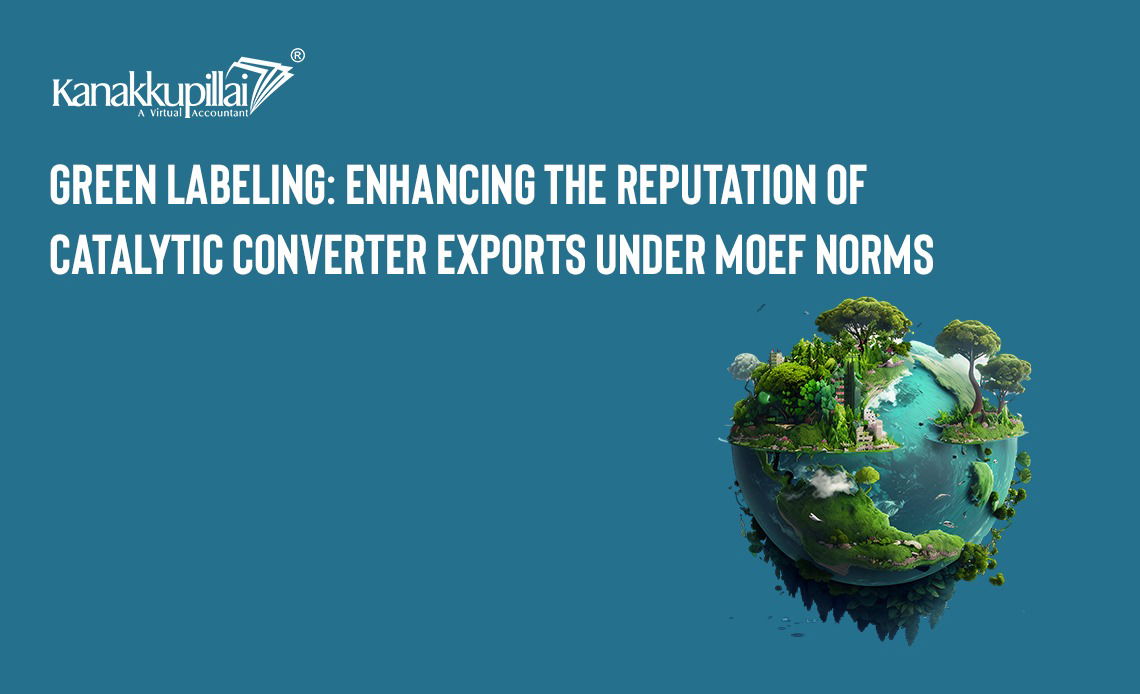Catalytic converters play an essential role in combating environmental pollution. They aid in doing so by reducing harmful emissions from vehicles. The need for catalytic converters grows directly with the worldwide automotive sector. This makes their export a significant economic activity. Thus, to guarantee the environmentally responsible export and production of these devices, countries usually adhere to certain guidelines. Often, these norms are stated by their respective Ministry of Environment, Forest & Climate Change (MoEF&CC). However, this blog explores the concept of green labelling as a strategy to improve the reputation of catalytic converter exports under MoEF guidelines.
Understanding MoEF Guidelines
The Ministry of Environment, Forest & Climate Change (MoEF&CC) establishes guidelines in many countries. These norms are framed to assess the environmental impact of industrial activities, including the catalytic converters’ export and production. MoEF guidelines usually emphasize emission standards, waste management and sustainable practices throughout the product’s complete lifecycle. Adhering to these norms is important for compliance and supporting a positive image in the global market.
Green Labeling: A Strategic Policy
Green labelling involves certifying products as environmentally friendly. The certification is based on specific criteria. Often represented by eco-friendly symbols or labels, this certification tells consumers and businesses that the product adheres to specific environmental standards. In the context of catalytic converters, green labelling is a powerful tool to set apart products that comply with MoEF guidelines. Also, it can identify the products that show a commitment to environmental responsibility.
Benefits of Green Labeling for Catalytic Converters
- Competitive Benefit: Achieving a competitive edge is important in a competitive market globally. A green label sets a company apart from competitors. This is a special case, particularly if the certification is recognised internationally. This benefit can open doors to new markets. Also, it attracts environmentally conscious businesses and consumers.
- Market Differentiation: The manufacturers and catalytic converter exporters can set their products apart with green labelling. The need for catalytic converters and other eco-friendly items increases as consumers become more environmentally aware. A green label clearly indicates that a product meets high environmental standards.
- Compliance with Regulations: Green labelling aligns with MoEF guidelines. Also, it demonstrates a commitment to compliance with environmental regulations. This not only avoids legal issues but also builds trust with regulatory bodies. Moreover, it also fosters a positive relationship with government authorities.
- Consumer Loyalty and Trust: A green label builds trust among consumers who prefer environmentally friendly and sustainable items. This trust can result in hiked customer loyalty. This is because consumers are more expected to support businesses that share their values.
- International Recognition: Green labelling can enhance the reputation of catalytic converters in the global market. International buyers often seek products that meet high environmental standards, and a recognised green label can facilitate market entry and acceptance.
Implementation of Green Labeling
- Conduct Environmental Audits: Manufacturers should conduct regular environmental audits to analyse their processes. Doing so also helps to ensure compliance with MoEF guidelines. This includes evaluating production processes, raw material sourcing and waste management practices.
- Seek Certification: Collaborate with recognised environmental certification bodies to obtain green labels. Certification processes may involve rigorous assessments of the entire production and supply chain, ensuring that products meet established environmental criteria.
- Transparent Communication: Once certified, transparently communicate the green labelling to distributors, consumers and other stakeholders. Accurate and clear messaging about the certified catalytic converters’ environmental benefits enhances the product’s perception.
Conclusion
Green labelling presents a strategic opportunity for catalytic converter manufacturers and exporters. This helps them to align their products with MoEF guidelines and gain a competitive advantage in the global market. By showcasing a commitment to environmental responsibility, companies can comply with regulations. Firms can also build trust, improve their reputation and contribute to a sustainable future for the automotive industry. Embracing green labelling is not just a business strategy. Instead, it is a step towards a greener, more sustainable world.





